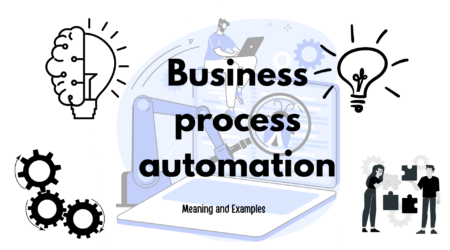Business Automation has already had an impact on how businesses manage orders, complete projects, and provide customer care. the creation of software robots utilizing machine learning that perform the kinds of laborious tasks that most people avoid.
Robots are capable of taking the place of humans in these roles, but they can also input data more quickly and do simple processing tasks. The best aspect is that by automating your process, your personnel will have more time to work effectively and will be better able to perform their jobs.
Below are some benefits of using business automation:

Greater Efficiency
Your procedures become more efficient through automation without losing accuracy or quality. Efficiency automatically increases when your staff has access to the precise data they need to do their tasks.
Increasing Productivity
The monotonous and repetitive tasks for human workers are the ideal candidates for automation. Automated robots can quickly process numerous pages or reams of data that would take a human worker a day to process since they never grow tired.
If your workflow process begins with client and customer data, there may be delays at the beginning of projects if there is a lot of preliminary data to enter.
A human operator will naturally take more time to complete all required inputs and conduct any processing or eaearly-stagehores. You can speed up your entire workflow and enable your staff to take on more projects each year by automating these tasks.
Increased Accuracy
Any procedure that requires 100 percent correct data and numbers is a perfect fit for automated systems. Robots don’t get tired or bored and they don’t make grammatical mistakes.
Your onone-thousandthntry will be just as accurate and trustworthy as your first. It also improves client satisfaction, lessens annoyance, and even enables your staff to work more efficiently thanks to an automated system’s accuracy.
Collaboration And Progress Tracking Are Made Simpler
Without automation, your employees would have to precisely input data, finish tasks, and remember to notify other workers when necessary to advance a project or carry out crucial activities. Critical tasks can be accomplished quickly after being automated, and the appropriate teams or ororganizationsan then be informed.
An automated system can track modifications as well as progress without needing to be reminded to do so. It will also never forget to advance a project. Having a bird’s eye perspective of the process and your progress thanks to real-time alerts lets you adjust your resource allocation as necessary.
When your employees can quickly access a project or file and are certain that it contains all the information they require and that all the data is accurate, they will be better able to work together.
Knowing that they are working with the most up-to-date and correct information on the project or client, your team can go forward with confidence. When done right, automation enhances human workers’ roles while also making their jobs simpler and more effective.
Superior Flexibility
There is no one-size-fits-all approach to automation; instead, you can choose how to incorporate the most recent advancements in automation to opoptimizeour workflow and business. You may make more informed decisions by carefully evaluating which tasks in your various procedures and methodologies are the best candidates for automation.
When determining which jobs can be automated, look for those that are routine, repetitive, and that demand a high level of accuracy without much original thought. Automation works best when you have given careful consideration to the optimal locations to implement it, whether it be for data entry, straightforward processing, or even tracking of your papers.
Provides Workers With Safer Workplaces
Even the most compliant operations frequently have on-the-job injuries due to the sometimes dangerous nature of warehouse labor. After all, manual handling of large goods and freight always carries inherent ergonomic dangers.
The warehouse is complete with safety risks, ranging from severe injuries like falling freight and heavy machinery mishaps to chronic problems like repetitive stress or trauma injuries. A lot of warehouse jobs are going unfilled as a result of these risky conditions.
On the other side, automation is altering a lot of that. The workflow is made simpler by warehouse automation software, making the warehouse safer and more efficient while assuring compliance throughout the entire chain of operations.
Conclusion :
Connecting large machinery to the Internet of Things enables quick detection of potential issues before they arise. Robotic equipment can take on the riskier duties concurrently. Additionally, these systems use data analysis and prediction to reduce errors, and a workplace with fewer human errors is safer.
ALSO READ
You may also like our other related articles on automation :







